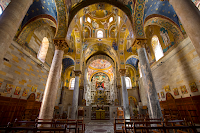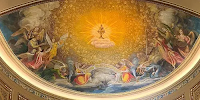 Recently Hape Sculpture , based out of Laion, Italy, revealed a collaborative piece with the atelier of Ana Rocha . This particular collaboration involved Hape producing the hand-carved wooden sculpture itself -- in this instance, a baroque-inspired statue of St. Peter -- wh…
Recently Hape Sculpture , based out of Laion, Italy, revealed a collaborative piece with the atelier of Ana Rocha . This particular collaboration involved Hape producing the hand-carved wooden sculpture itself -- in this instance, a baroque-inspired statue of St. Peter -- wh…
Our Advertising Partners
-
The global pandemic has disrupted the normal celebration of the Holy Week in Spain, where, for a second year, the government has forbidden t...
-
We live in a very visual, image-based culture and, what's more, there is always lots of curiosity around the matter of traditional papal...
-
Above is an image of Pope John XXIII after his death in 1963, dressed in red vestments for burial (the arms on the front of the chasuble app...
-
The mitre is one of the most recognizable symbols of prelates of the Church, specifically of bishops up to the Roman pontiff himself -- thou...
-
The papal blessing known as the Benedictio Coram Populo, or more commonly as the Urbi et Orbi (to the city [of Rome] and to the world) bless...
-
To the person who simply enjoys beautiful art and architecture, distinctions like "baroque" or "rococo" might seem overl...
Blog Archive
-
▼
2025
(139)
-
▼
July
(9)
- Contemporary Polychromed Sculpture - Val Gardena a...
- From Kitchen to Chapel: St. Matthew Adoration Chap...
- The Italo-Byzantine Church of Santa Maria dell'Amm...
- A Tour of the Cathedral Basilica of Notre Dame in ...
- Vestments Made by St.Thérèse of Lisieux
- An Extraordinary Monstrance from 1774
- Noble Beauty: An Altar Design for a Small Chapel
- "Strahlenmadonna" of Fifteenth and Sixteenth Centu...
- A Unique Dominican 'Memento' Cope
-
▼
July
(9)
Donate
Copyright ©
Liturgical Arts Journal | Powered by Blogger


































































